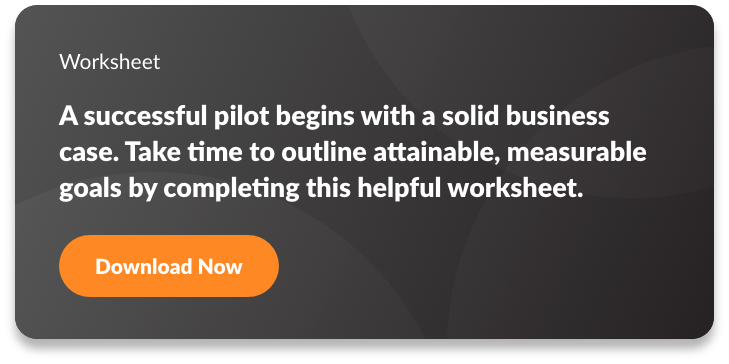Crawl, Walk, Run to Get Your Learning Ecosystem from Pilot to Production
If you’ve recently made the momentous decision to launch a Learning Experience Platform (LXP) like SparkLearn (or are on the brink of doing so), you might feel paralyzed by the enormity of the challenge ahead of you. How do you integrate everything in your learning ecosystem into SparkLearn so you can see all the benefits of your new tool in action? After all, you want to prove an LXP will serve your organization well, so you need to connect every conceivable component right away to make sure it’s a good fit. Right?
Not so fast.
It can be tempting to try the cliche "boil the ocean" when it’s time to roll out a new LXP — meaning, you want to get everything up and running immediately and make full use of the exciting new technology available to you.
However, you wouldn’t attempt to run a marathon if you’ve never finished a 5k. You know you’d need to train, complete shorter runs, and build up your endurance to prepare yourself for the ultimate goal. In the same way, getting your LXP from pilot to production will require breaking the process down into manageable segments. You’ll need to test, iterate, gather feedback, and adapt along the way.
Following a gradual crawl, walk, run approach is key if you want to attain the successful outcome your company expects.
Crawl: Pilot SparkLearn on a Small Scale
Once you’ve done all the legwork to gain buy-in from your internal partners and have selected SparkLearn as your new LXP, you’ll need to introduce the system to your workers. The best way to do this is to pilot the product using a sampling of content and functionalities for a small team or work group. Once begun, pilots typically last for several weeks or longer. It’s important to factor in enough time to gather feedback and data about how your teams are using SparkLearn, what features are adopted quickly, and what kinks need to be ironed out.
However, before you begin, it’s crucial to first take time to clearly define what a successful pilot looks like. To do so, put together a solid plan based on attainable, measurable goals.
Define Your Pilot’s Business Objectives
Let’s be real. Your leaders are approached by team members who want to spend money on new products and technologies all the time. There is always a next-best idea, app, or gadget that promises to solve your problems and maximize your workforce’s capabilities.
How can you prove to them that SparkLearn won’t end up in the annals of abandoned tech solutions that have come before it?
The answer is to establish business objectives before the pilot begins. Outline a plan of action and create metrics that will show whether your goals are being met.
To create a strong business case, answer questions like:
What is the most important measurement of success - what is the first win you can claim here?
What is your plan to get reluctant team members on board with the pilot?
Are there incentives that can be rolled out to encourage buy-in and regular use?
How will you gather and incorporate feedback from pilot users?
What types of content are most crucial to test in the pilot phase?
Should you use existing content or source new content for the pilot?
If you need to use existing content, is it modeled in a way that will work well with a mobile-first platform? If not, how will you adjust?
Once you’ve developed your business case, create metrics to help you analyze whether your goals and objectives are being achieved. Consider things like:
Are employees using SparkLearn regularly, ideally weekly or even every day?
How long do they stay in the application? How many pieces of content are they accessing?
What types of searches are they conducting? What tags are they following?
Do they use quizzes or other measurement tools? Feedback and rating?
How many courses have they completed? Bookmarked? Annotated?
Metrics will give you quantitative insight into how employees are using SparkLearn. However, in order to fully prove that your pilot is successful, you should gather qualitative data as well.
Gather Feedback on What Works and What Doesn’t
Eventually, you will roll out SparkLearn to your entire workforce — but whether you have 1,000, 10,000, or 100,000+ employees, you don’t want to ask all of them to weigh in on an initial pilot. Rather, you should identify a small work team — perhaps a dozen or maybe two — to test various elements of the system and give you their feedback. Confine a pilot to a cohort or otherwise segmented group so you can really look into their activities to gain insight.
Qualitative input gives you a glimpse into how people feel about using the LXP. You’ll want to learn:
What’s their gut reaction during the onboarding process?
Do they find the platform easy to navigate?
Does the interface feel intuitive?
Is the content easily searchable?
Can they find what they need when they need it?
Are they able to skip past material they already know in order to accelerate their learning?
What do they like most about the platform?
Are there elements that push their buttons the wrong way?
What needs to be tweaked to make using SparkLearn even easier for them?
Taking all the quantitative and qualitative data you’ve gathered in the pilot, you’ll move from the Crawl to Walk phase.
Walk: Expand Your Pilot to Test More of Your Learning Platform’s Functionality with Additional Users
In the Crawl phase of your pilot, you tested SparkLearn with a small group of employees using a subset of available content types, modalities, and tutorials. Now it’s time to take what you learned in that initial phase, make necessary changes, and roll out additional features that integrate SparkLearn with more elements of your professional learning ecosystem.
How to Progress from Crawl to Walk
Imagine that in the Crawl phase, you opted to launch your pilot with your Executive Team in order to achieve buy-in from them early on. Because of your organization’s focus on leadership development, you added content and resources about executive coaching and emerging leadership principles. Although you didn’t have any original content to include, you sourced information about modern, person-centered leadership from credible sources on the web. Your Executive Team learned how to navigate SparkLearn, browsed through the content, took a few quizzes, and reported their feedback back to you.
To progress to the Walk phase, you’ll build on the work you’ve done with the Executive Team and begin cascading additional content down to directors and managers throughout the organization. This invites more participants from a variety of departments into the pilot and gives you a larger data set to work with as you analyze your metrics.
The Walk Phase Requires You to Grow Your Skills
In the Walk phase, it’s also time to grow your skills and begin creating original content within the LXP rather than simply curating existing content from other sources. Content authoring within SparkLearn is intuitive, fast, and easy. You might opt to create a video featuring several of your HR managers talking about your organization’s core leadership principles. Maybe you add some helpful tip sheets on how to have a tactful conversation about performance with employees who are struggling. From there, you might build out coaching scenarios and examples to give practical insight into how to approach tricky supervisory situations.
During this phase, you might also look for existing content that lives in different systems across your organization and test integrating it with SparkLearn to begin experimenting with how data will flow back and forth between systems.
The Walk phase will last for as long as it takes to add in more and more test groups and integrate more elements of your learning ecosystem into the platform. Maybe a few months would work for planning's sake. Along the way, you may find it’s time to reimagine some of your content and resources completely in order to make the most of SparkLearn’s light and airy design. It will take time, testing, iteration, and dedication to integrate the full breadth and depth of your professional learning ecosystem into SparkLearn. When you have, you’ll find yourself in the Run phase.
The measures during this phase may also change. Is it going to be more qualitative in nature, or do you need harder data to help you find the value and report to your stakeholders? Only you can really answer this as every organization is going to be different and have different goals for this expanded phase.
Run: Take Your LXP Beyond the Finish Line
Reaching the Run phase doesn’t mean you’re done. Yes, you’ve completed a long, challenging journey and reached a finish line of sorts. However, your goal is to take your LXP across the finish line and keep moving forward in perpetuity. Learning never ends — and you’ll never be done trying out new content modalities, integrating additional systems, analyzing data, and ensuring your workforce has up-to-date, real-time information that supports them in the flow of work.
We continually release new features and capabilities that will support you all along the way. For instance, our most recent SparkLearn 2.5 release features improved image authoring, sharper content usage analytics, and group browsing options that encourage peer-to-peer social learning.
Launching an LXP is an opportunity to break away from traditional professional learning approaches and embrace the benefits of person-centered learning fueled by adaptive, AI-infused technology. If you’re ready to get started and need a little more help, just reach out. We’d love to help you transform professional learning for your workforce.
Continue the Conversation.
Speak with a specialist and learn how SparkLearn can improve your organization and the challenges you face.

